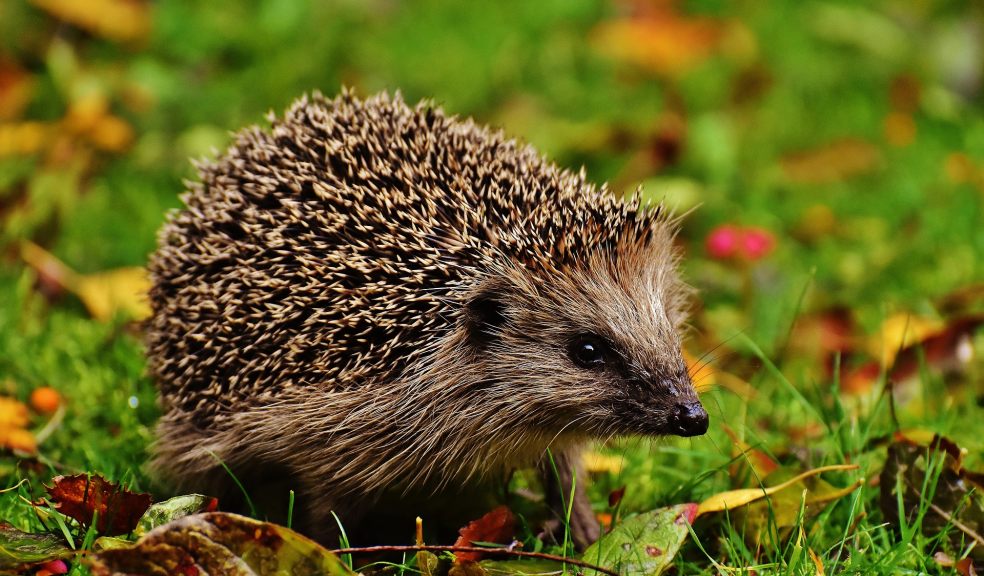
Don’t leaf it to the last minute – prepare your garden for winter
New homeowners in Exeter are being encouraged to give wildlife a helping hand through the harsh winter months by preparing their gardens for the cold weather.
Barratt Homes has teamed up with the RSPB to give its customers five top tips this season on how they can give nature a home ahead of the cold weather kicking in.
The tips and tricks on what to do as the seasons change are fun for all of the family and have been carefully selected by Barratt Homes to fit around a small budget and a time frame of less than two hours.
So if you want to do a little bit to help preserve Britain’s wildlife or you want to transform your garden for all of nature to enjoy this season, Barratt Homes and the RSPB have got you covered.
1. Open up your very own bird café
A fantastic way for new homeowners to invite wildlife into their garden is by opening up a bird café to give feathered friends a place to feed during colder months. You can do this easily by investing in a bird feeder or a roofed bird table and getting a mixture of seeds, fruits, nuts and oats to put in them. Different types of birds prefer different types of food, so if you’re looking to have variety in your garden, be sure to pick up an assortment of bird food. Other than topping up the bird feed when it’s empty and making sure you clean your feeders often, you can sit back, relax and enjoy your very own wildlife show in the comfort of your garden.
Sales director Sara Parker said: “We’ve chosen the bird café as our absolute top tip because I think it’s a great way for new homeowners to add a bit of wildlife and colour to their gardens without having to spend hours on it. This is the perfect activity to take part in if you’re looking for something easy to do that you can enjoy all year round. Birds are fascinating creatures and we, as a country, should treasure them and be able to appreciate their mesmerising behaviours up close.”
2. Give insects a winter holiday home for creepy crawlies
As the colder weather draws in, try creating a safe hideaway for insects and other mini beasts to use as shelter from the frost. Gather old materials and garden waste such as wood, soil and plant stems to create a small multi-storey bug hotel, then provide as many different holes, spaces and tunnels for wildlife to climb into.
3. Provide re-leaf for hedgehogs
Build a leaf storage cage with wooden stakes and chicken wire and fill it with leaves as you rake them up in autumn. The leaves will gradually turn into leaf-mould which is useful for compost mixes. Be sure to leave a small gap under at least one side to allow hedgehogs, toads and small mammals to get in and use the leaf bin as a cosy place to hibernate.
4. Keep nest boxes in tip-top condition
If you have a nest box in your garden, now is the ideal time to spruce it up after birds have finished using it for young. Make sure the nest box is no longer active, then remove the lid and clean out the box with boiling water, allow to dry thoroughly and place a small handful or hay or wood shavings inside before returning it to its place.
Small garden birds such as wrens, blue tits and sparrows can then use the nest boxes throughout autumn and winter as a place to roost.
5. Get in the Halloween spirit by putting up a bat box
For new homeowners keen to expand their DIY skills, autumn and winter is the ideal time to build and put up a bat box to give the nocturnal creatures somewhere to roost, raise their pups and sleep throughout the day.
As bats use existing structures to roost, many of their usual roosting places are being damaged and destroyed so giving them a safe place to call home is a great way to boost your garden wildlife.
Make sure your bat box is made from untreated wood, and is sealed tight to avoid draughts. Leave a slit towards the back of the box, with a rough piece of wood leading up to it for them to clamber up. If DIY isn’t your thing, the RSPB sell a selection of pre-made bat boxes.
Bats prefer to live higher up, so place your bat box under the eaves of your house or on a tree trunk.
Sara continued: “Our partnership with the RSPB is important to help demonstrate how we can protect and enhance the biodiversity of the local area, benefitting our customers and the wildlife around our developments.
“We’ve handpicked these fantastic tips from the RSPB as the easiest and least time consuming ways that customers moving into their new homes can do their bit for nature in autumn and winter.
“When moving home everyone is busy and we understand that no one has a lot of time to spend in the garden but it is important to remember that the wildlife around us also need homes and these top tips are really fun and easy ways for everyone to get involved with that.
“Here at Barratt Homes, we want to work closely with our customers to ensure our British wildlife is preserved at our developments as this is extremely important to us.”
Adrian Thomas, the RSPB’s wildlife gardener, said: “So much wildlife is in crisis these days, so any little thing you can do means your new garden can be part of the solution rather than the problem. The brilliant thing is that it’s likely to bring you lots of joy, too.”
For more information about any of these top tips or to become a member, please visit the RSPB website http://www.rspb.org.uk/














